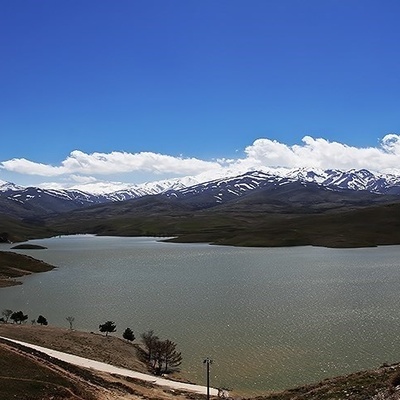SAEDNEWS: The Fire Temple of Isfahan, perched on a hill overlooking the city, is an ancient Zoroastrian site that fascinates visitors with its mysterious ruins and breathtaking views. It stands as a timeless symbol of Iran’s rich cultural and religious history.
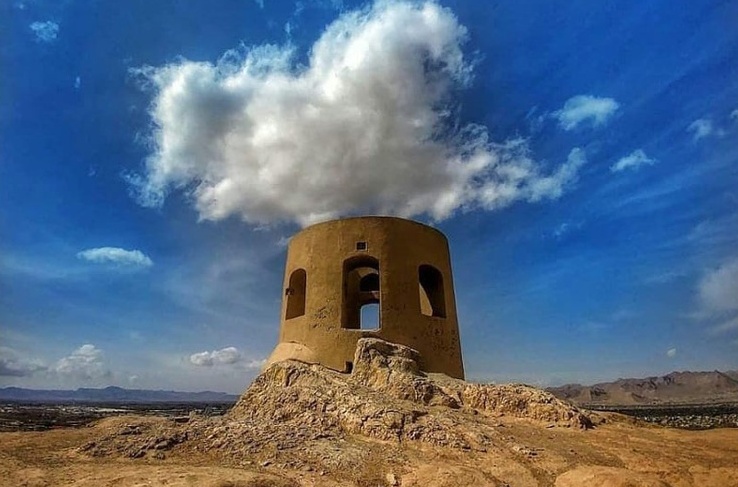
The Atashgah of Isfahan, also known as the Fire Temple of Isfahan, is one of the oldest historical relics from the Sassanid period and among the top attractions of Isfahan. Its original name was Dezh Mehrbin, though locals now also call it Marbin Fortress. This fire temple was considered one of the seven major and important fire temples of the Sassanid era.
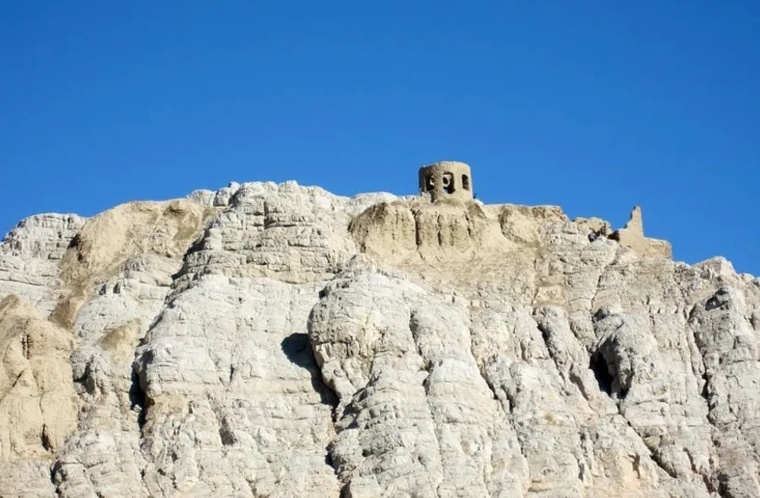
The Atashgah of Isfahan is located atop the 100-meter-high Atashgah Mountain, in the Marbin region, eight kilometers west of Isfahan. It lies in the southern part of Khomeini Shahr, about two kilometers from the Menar Jonban, and to the north of the Isfahan–Najafabad highway. From the top of this mountain, you can enjoy stunning panoramic views of the city, surrounding gardens, and farmlands.
To reach the Atashgah, you must use a private car or chartered taxis. From anywhere in the city, take Kharazi Highway or Jihad Street to Atashgah Street. After driving about eight kilometers along this road, you will see the entrance to the site. Once at the mountain, prepare for a climb, keeping in mind that the ascent may be challenging for some visitors.
Studies show that the structure dates back to the 6th century BC and was transformed into a site for the Eternal Flame in the 3rd century AD. In ancient texts, it was referred to as Dezh Mehrin, and frequent references to the culture and civilization of the ancient towns of Mehrin and Marbin highlight the antiquity and authenticity of this monument.
Research on this monument began in 1938 by André Godard, published in a series of Iranology journals. The first precise architectural plan of the Atashgah was prepared in 1960 by Maxime Siroux. Among Iranian researchers, a Zoroastrian priest named Rashid Shahmardan was the first to study the site, followed by archaeologist Dr. Alireza Jafari Zand alongside Mitra Azad. These Iranian scholars later published their findings in books dedicated to the Atashgah.
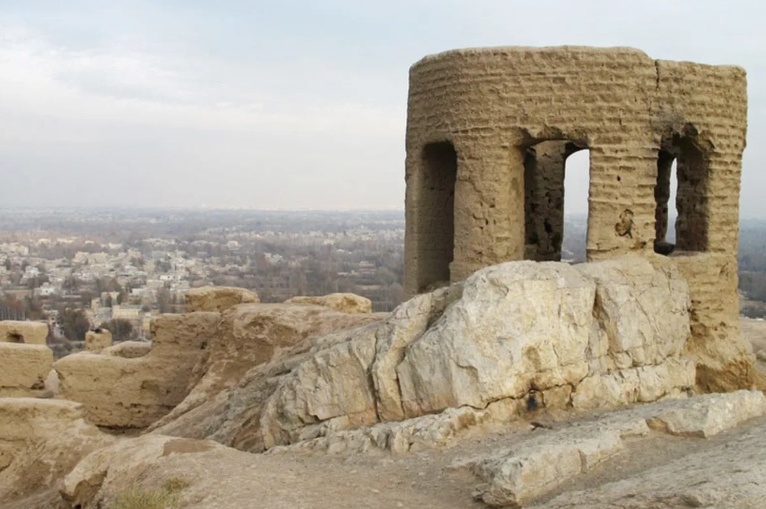
Today, the structure bears numerous holes dug by looters in hopes of finding treasure. The number 1353 engraved on some of the bricks on the northern side indicates that the fire temple underwent restoration during the Pahlavi era.
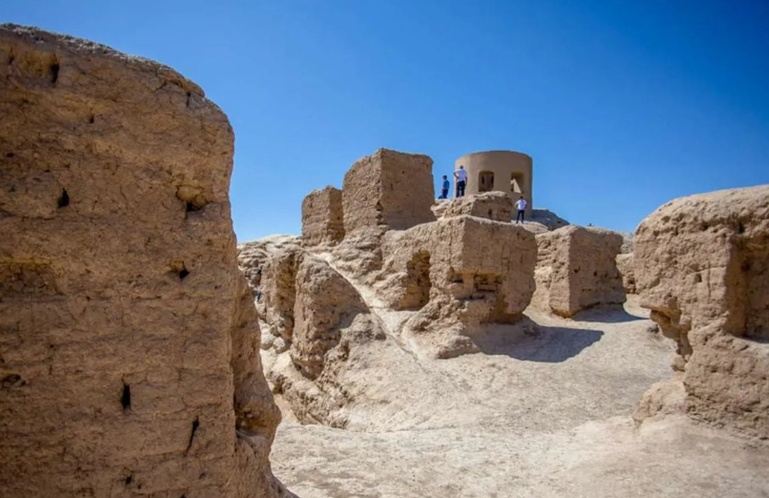
The ancient architecture of the fire temple clearly reflects its long history; a massive structure with each side measuring 107 meters in length, resembling an impregnable fortress. Remnants of the building indicate that it once had five stories, of which only two remain visible today. Traces of tall, sturdy columns extending from the mountain to the chamber at the summit, along with multiple other rooms firmly built upon these columns, can also be observed.

While climbing the mountain, you may notice remnants of stairs once carved into the rock, of which only faint traces remain today. The surviving bases on the walls indicate that in past centuries the structure was crowned with a tall, circular dome.
The building material consists of raw bricks made from a mixture of clay, lime, and reed stalks. Dried reed branches were placed between the bricks to provide additional strength.
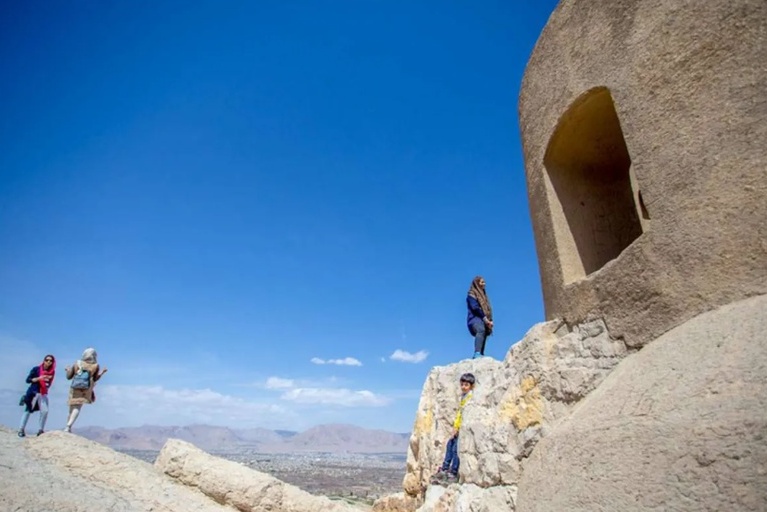
At the top of the structure, on the highest point of the mountain, stands a circular chamber with eight sides made of adobe, surrounded by eight windows, with walls half a meter thick. Many believe that, due to the presence of outward-facing windows, Zoroastrian priests kept the Eternal Flame in this place. Little evidence remains from the last periods when this fire temple was lit.
Since the Atashgah is located outdoors on a mountain and reaching it requires climbing, the best time to visit is in spring, as the summer heat or the cold of autumn and winter can be unpleasant. In particular, the months of Ordibehesht and Khordad (April–June) are ideal thanks to their mild and pleasant weather, as well as relatively smaller crowds compared to the New Year holidays. Additionally, due to its location, it is recommended that visits take place during daylight hours.


